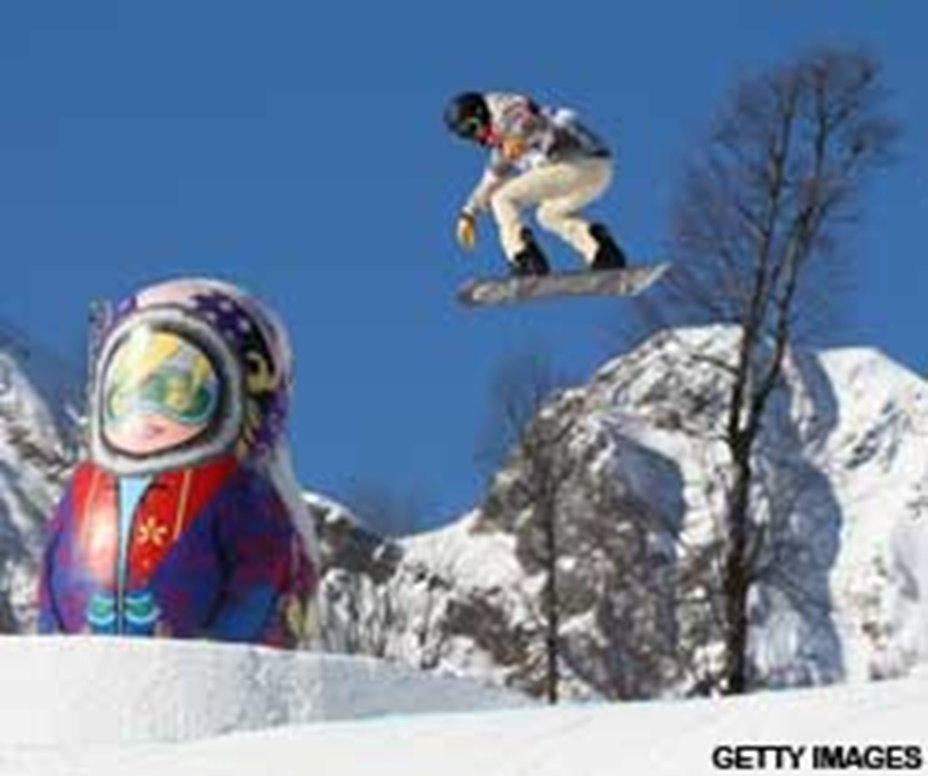U.S. snowboarder Shaun White's decision to withdraw yesterday from the new slopestyle event at the Sochi Games was "the culmination of days of mounting evidence that event organizers had overreached and assembled a course that was risky even by the standards of this daring, alternative sport," according to Gold & Dillman of the L.A. TIMES. A Finnish competitor yesterday said that the course had "crossed the line from 'gnarly' to 'sketchy.'" Following injuries to Norway's Torstein Horgmo and Finland's Marika Enne earlier this week, Olympic officials "scrambled to respond, meeting with athletes and tweaking the 2,083-foot-long course in an effort to moderate it." However, some snowboarders "downplayed the risks of the course." Canada's Mark McMorris said, "Snowboarding is dangerous. Like crossing a street is dangerous." Gold & Dillman note slopestyle was "fast-tracked into the Olympics only three years ago, an unusual departure" for the IOC. Even snowboarders were "taken by surprise by the decision," as "most had assumed that the event would not make its Olympic debut until at least" the '18 Pyeongchang Games. But many observers "saw the decision as a reflection of the Olympics' desire to reinvent itself and attract a younger audience" (L.A. TIMES, 2/6). In DC, Liz Clarke writes White's decision to withdraw "not only robbed Sochi of yet another big name in a much ballyhooed event," it also "added to the mounting evidence that Olympic organizers, in their zeal to jazz up the Winter Games in order to connect with a younger audience, may be carrying the 'no-limits' ethos of extreme sports one step too far" (WASHINGTON POST, 2/6).
DIAL IT BACK: In N.Y., John Branch reports several athletes "echoed White’s concern about the slopestyle course." Canadian freestyle skier Kaya Turski called it "unnecessarily risky." Turski "worried that images of injured athletes would overshadow the artistry and athleticism of the competition." Branch notes that is "not the type of first impression, or lasting impression, the sport wants for its Olympic debut." Turski: "To put on a good show, we don’t need a course as risky as this. The vibe on the course is definitely more intense, and people are more on edge." Branch notes as is "typical with slopestyle, organizers built the course with the expectation of making adjustments after snowboarders and skiers had begun training and providing feedback." The alterations in Sochi "has largely involved the size of the jumps, which have all been scaled back" (N.Y. TIMES, 2/6). However, U.S. snowboarder Chas Guldemond said, "I think the media kind of blew the dangerousness of the course up quite a bit. Everything that we’ve done here is completely normal." Canadian snowboarder Sebastien Toutant added that "concerns about the slopestyle course’s safety have been overblown." Toutant: "I don’t think this course is more dangerous than any (other) course. Slopestyle is an extreme sport. So if you come here and you think there’s no risk, just go do something else" (WSJ.com, 2/6). In Denver, Jason Blevins notes several news reports cited requests for adjustments to the slopestyle layout "as athletes 'demanding changes' on the dangerous course." But input from riders is "essential at every slopestyle contest, where designers build what they believe is the best course with expectations of making changes after the world's top riders test their creation" (DENVER POST, 2/6).
COURTING YOUNG VIEWERS: Olympic historian and author David Wallechinsky said that the addition of slopestyle snowboarding is part of an IOC effort "to inject a more edgy, contemporary vibe to the Winter Games in the wake of market research in the 1990s that showed the Games were losing the youth market." The WASHINGTON POST's Clarke noted the push to reclaim the youth market started at the '98 Nagano Games, where "two disciplines of snowboarding, halfpipe and giant slalom (since replaced by parallel giant slalom), made their debut." Sochi "carries that initiative further." In all, 12 new events "have been added -- eight of which boast X Games roots and the younger fan base that the IOC, Olympic broadcasters and advertisers covet." USOC CEO Scott Blackmun said of the effort to attract a younger demographic, "It’s important. We’ve done a better job on the winter side than on the summer side. I think in deciding to bring snowboarding in at the beginning, it has had a great impact. I’ve got kids. They love to snowboard; they don't like to ski. It's exactly the right direction" (WASHINGTONPOST.com, 2/5).




